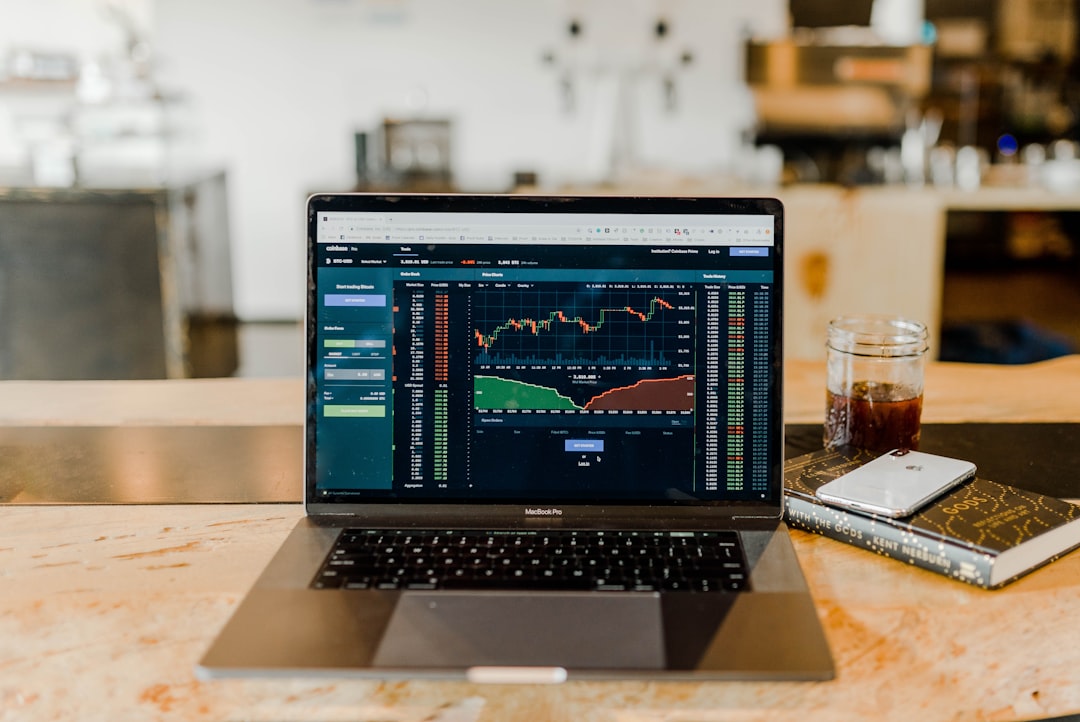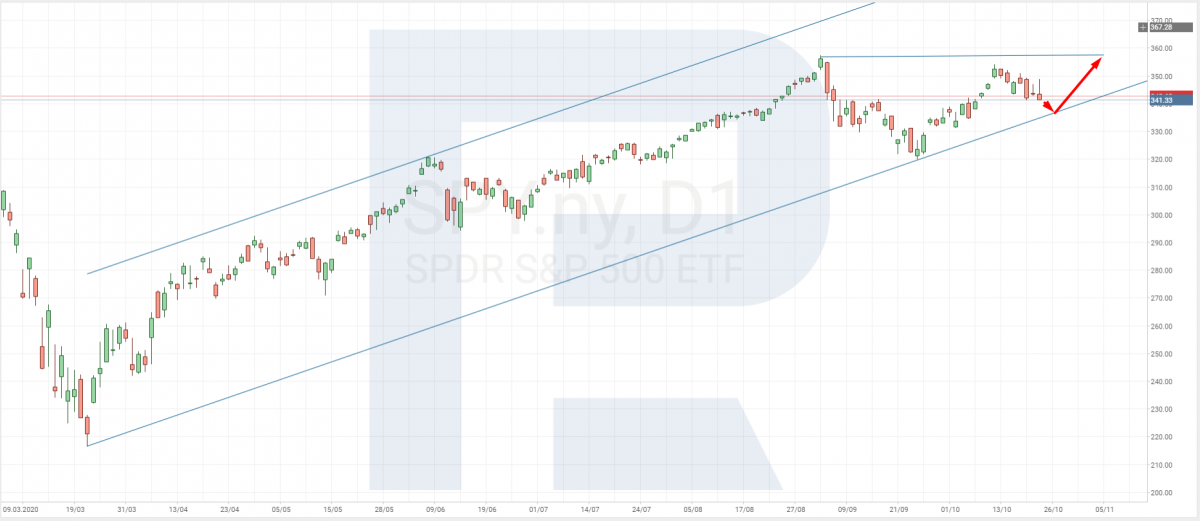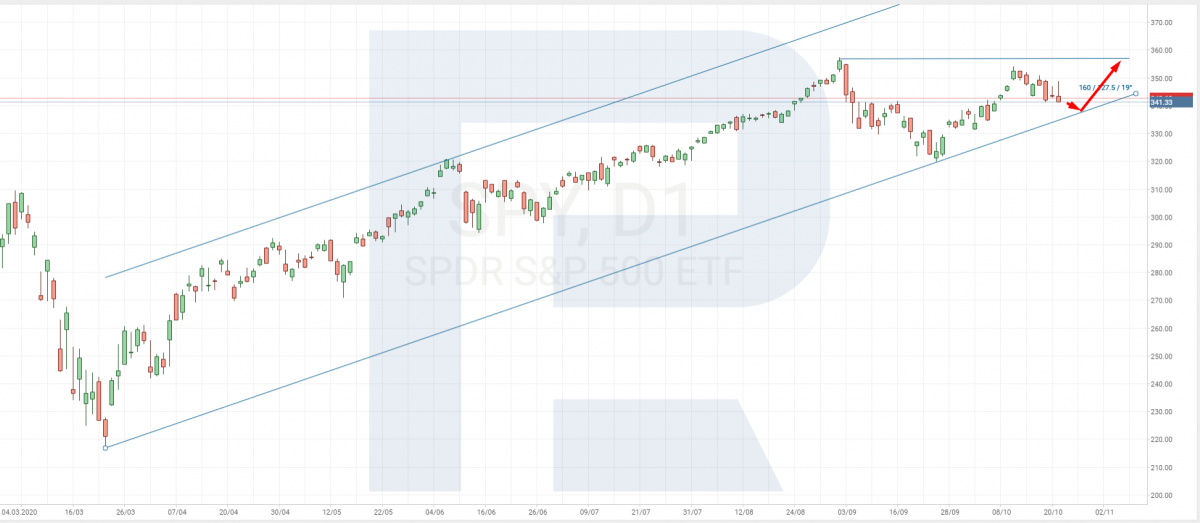Financial News
How to Invest in S&P 500?
 Photo by Austin Distel
Photo by Austin DistelOriginally Posted On: How to Invest in S&P 500? | R Blog – RoboForex
In this article, we will discuss trading S&P 500. In the exchange, this index is trading under the ticker US500; today, it can be found in many popular trading terminals.
What is S&P500?S&P 500 was created by Standard and Poor’s (currently S&P Global) on March 4th, 1957.
Earlier, another index called Dow Jones Industrial Average Index used to be popular. It included the 30 largest industrial companies. Also, other indices were there; however, they covered only a small group of companies, hence, did not represent the whole picture of market moods.
Standard and Poor’s went their own way and decided to create an index that would show the market situation on the whole and not just the state of things in the industrial sector. This is how the S&P 500 appeared.
The new index was comprised of 500 large companies with the biggest capitalization from various sectors. However, the number of companies and the exact contents of the index remains prone to change.
What are the companies in the S&P 500?The index includes the 500 largest companies traded in the US stock market. To be listed in the index, a company must comply with the following requirements:
- capitalization no less than 6 billion USD;
- registered in the USA;
- stock liquidity (the number of stocks traded) no less than 250,000 per month;
- no less than 50% of the stocks available for free trade;
- profitability during the four last months of the accounting period.
The list of companies is revised every quarter. If a company turns out to be faulty in a way, it is replaced by another suitable company. Usually, the list loses companies that start generating losses in the accounting period or the liquidity of which drops.
The leaders of the index are currently the giants of the IT and banking sectors, such as:
- Apple Inc (AAPL)
- Microsoft Corporation (MSFT)
- Amazon.com Inc (AMZN)
- Facebook Inc (FB)
- JPMorgan Chase & Co (JPM)
IT companies take over 27% of the index, healthcare companies – 14%; the shares of the remaining spheres are not that significant, though they comprise more than 50% of the index, taken together.
S&P 500 is calculated based on weighted capitalization, which means companies that have larger capitalization have more influence.
How to invest in the S&P 500?S&P 500 is good for not only intraday trading but medium-term investments as well. Thanks to many market players being interested, the index demonstrates high volatility and liquidity during the trading session. Also, you can go on trading after the trading session ends, though liquidity will shrink.
The only limitation for future investors is the high price of the index, which entails the use of leverage or the increase of the deposit.
S&P 500 CFDNowadays, we all have an opportunity to trade not the index itself but its Contract for Difference (CFD). This is a good chance for beginning traders who can trade CFDs on virtually any trading platform. The chart of the S&P 500 CFD is completely bound to that of the index itself and copies all the movements.
S&P 500 ETFThe most popular S&P 500 ETF is SPDR S&P 500 (SPY), which is a derivative that fully copies the dynamics of the S&P 500 but costs much less – 1/10 of the price of the main index. This allows traders and investors to trade the S&P 500 without leverage.
SPY trades the same way as all other instruments in the exchange. However, follow your risk management rules as tightly as possible. Normally, ETF trading means investment projects that last several years.
FuturesAnother popular instrument is a futures contract for the index. A futures S&P 500 contract is an agreement that obliges the seller and buyer to stick to the initial arrangements. It has no particular difference between it and other non-deliverable contracts.
A futures contract for the index is bound to the index itself and depends on the stock price of the companies included in the base asset (index). The futures for the S&P 500 provides not only investments but also speculations. You can trade both in the medium term and intraday. You can also hedge risks and play short while using small capital.
An investment idea for buying the S&P 500For trading in the medium and long term, you can choose several ideas. First, make up your mind about the term of the investment. Then decide upon the sum of your investment and whether you are ready for extra investments. During the whole term of the investment, you can buy more and increase the volume. It is no secret that your final profit depends on this.
Currently, the most appealing investment idea is buying CFDs and ETFs. The reasons for it are as follows:
- availability;
- a low cost compared to that of the base asset (S&P 500);
- high liquidity;
- good volatility.
These factors allow beginners to make their first steps on his way, while experienced traders can increase the size of their investments.
The charts of the S&P 500, its CFD, and ETF are almost identical, only certain candlesticks and the price of the assets differ. The CFD and ETF trade at the same price.
During a trading session, current prices might differ a bit depending on how active trading is. This factor has almost no influence on medium- and long-term investments.
You can choose your asset yourself. Below, see an option that suits all three instruments.
Look at the charts of the S&P 500, the CFD, and ETF:
 S&P 500
S&P 500  S&P 500 ETF
S&P 500 ETF  S&P 500 CFD
S&P 500 CFD The charts show that the instruments are correcting in a bright uptrend. To make your buys more profitable, wait for the correction to end.
The pullback may end at the lower border of the ascending channel. If we buy from the support level, we may decrease the risk of a possible drawdown. The aim of the growth, judging by the overall ascending dynamics, will be the nearest high.
In the medium run, the quotations may renew the highs and go on growing. Before the new year comes, the market may get into a rally: investors and speculators will be closing their positions to take the profit. After the new year holiday, there is normally a lull, and the quotations get back to normal.
S&P 500 online chartTrading conditions in RoboForexRoboForex provides its clients with a wide range of opportunities to trade ETFs and CFDs. In the R Trader terminal, you can find almost any instrument currently traded in the exchange.
Spreads start from 0.1 points, commission fees – from 1 USD, which attracts not only medium-term investors but also speculating traders.
Closing thoughtsThe liquidity levels, volatility, and price make CFDs and ETFs the most attractive investment options. Note that its average annual profitability is about 9%.
Some may say that such profitability is not really high, however, we can hope for the growth of the instrument in the long run. In medium-term investments, you can sometimes play short and diversify risks in the case of a pullback.
Anyway, investments in stock assets may be risky and require good analysis and studying. This is fair for not only S&P 500 but other instruments from this category as well.
Stock quotes supplied by Barchart
Quotes delayed at least 20 minutes.
By accessing this page, you agree to the following
Privacy Policy and Terms and Conditions.



